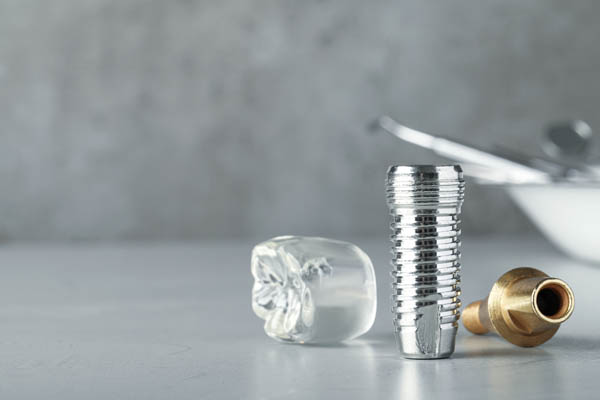Dental implant placement is a term often used to describe the entire process of installing an implant-supported tooth. The process varies, depending on a patient’s unique set of circumstances. This means that recovery periods also differ from one person to the next. A number of various factors may influence the time that a person takes to heal from implant placement.
What to expect from dental implant placement
An implant-supported tooth has three components. The first is the dental implant, which acts as the root of the entire artificial tooth. This part is embedded in the jaw where it anchors the rest of the tooth. The second component is the abutment, and this acts as a connector between the implant and the restoration. The third element is the dental restoration, which sits above the gum line and may consist of a crown, a bridge or a set of dentures.
Getting an implant-supported tooth is a process that involves one or more surgical procedures. Here is a list of all possible steps:
- If needed, a dentist performs a tooth extraction
- If insufficient bone mass exists to anchor the implant, bone graft surgery is performed
- For patients who need implants in the upper jaw near the sinuses, sinus lifts are added
- A dental implant is placed
- Placement of the abutment
- Placement of the dental restoration
Some of these procedures can be combined, depending on an individual’s circumstances. For example, an abutment can be placed along with the dental implant, or an implant can be installed at the time of tooth extraction. Some people are even candidates for same-day teeth. Therefore, recovery time depends on multiple issues.
Factors affecting recovery
The process of getting a complete artificial tooth often takes several months. Much of that time involves recovery from each individual procedure. A person who combines one or more processes will have fewer procedures to recover from.
Not all people can or should combine several steps of dental implant placement. Only people with great physical and oral health get this option. Likewise, people who go through bone graft surgery need more recovery time than a person who gets an implant right after an extraction. In addition, the more dental implants a person needs, the more healing time they require. Here is a timeline of the recovery process:
1. Recovery after bone graft surgery
After surgery, the dentist waits to place the implant until the donor's bone integrates into the jaw but before the jaw starts to lose bone mass again. This can take anywhere from three to six months.
2. Recovery after implant placement
Compared to bone graft surgery, this procedure places fewer demands on the body. A person will only need to wait for the bone to integrate with the implant as the surgical site heals. This takes anywhere between two and six months, depending on how fast a patient can generate new bone tissue. Ultimately, it all depends on an individual’s overall health.
3. Recovery after the placement of the abutment
A healthy patient may get an abutment along with the dental implant, which means no additional surgery or recovery time. Patients who need a separate procedure will need a few weeks to allow for gum tissue to heal and grow around the abutment.
4. Recovery from the dental restoration
Since the restoration is screwed onto the abutment, incisions and sutures are rarely necessary at this point. After the dentist attaches the crown, bridge or denture, the patient simply goes home with a fully functional tooth that is ready for use. Usually, the dentist will wait for the gums to heal around the abutment before installing the dental restoration. In the case of same-day teeth, the gums and jaw will heal with the restoration in place.
5. Recovery when two or more steps are combined
Since dentists often prefer to combine sinus lifts with bone grafts, the recovery time involves a single, months-long time period. Some patients get a bone graft and dental implant at the same time. Others do not need a bone graft and may get a same-day tooth. In this scenario, a person will need a few weeks to heal from the incisions and sutures. The person may start to use the tooth, within limits, as they wait for the implant to fuse with the jawbone.
Customized treatment plans
A knowledgeable dentist knows that individuals need a dental implant treatment plan that suits their unique needs. Visit a reliable dental clinic where a professional dentist thoroughly evaluates patients and advises them about available options to replace missing teeth. The practitioner will explain the steps of the treatment plan, including the time needed to heal from each procedure.
Request an appointment here: https://www.westtexasperio.com or call Advanced Periodontics & Implant Dentistry at (432) 538-3318 for an appointment in our Odessa office.
Check out what others are saying about our dental services on Yelp: Dental Implants in Odessa, TX.
Related Posts
The Process of Getting a Dental Implant From a Periodontist
Are you considering getting a dental implant from a periodontist? Dental implants, also known as endosseous implants or fixtures, are a great solution for people who have lost teeth due to injury, …
Oral Surgery: Who Is a Candidate for Dental Implants?
If you have a missing tooth you would like to replace, you need to learn more about getting a dental implant. Dental implants can improve your smile. They can also prevent …
Tooth Replacement - The Steps for a Dental Implant Procedure
One of the most common treatment options for missing teeth is the dental implant. This permanent replacement has a natural appearance and feel that mimics real teeth. Implants are typically done for …
How a Surgical Dental Implant Fuses With Jawbone
If you are looking to replace several teeth due to decay, infections, disease, injury, or other loss, then you may be looking for your options for a dental implant. The good news …

